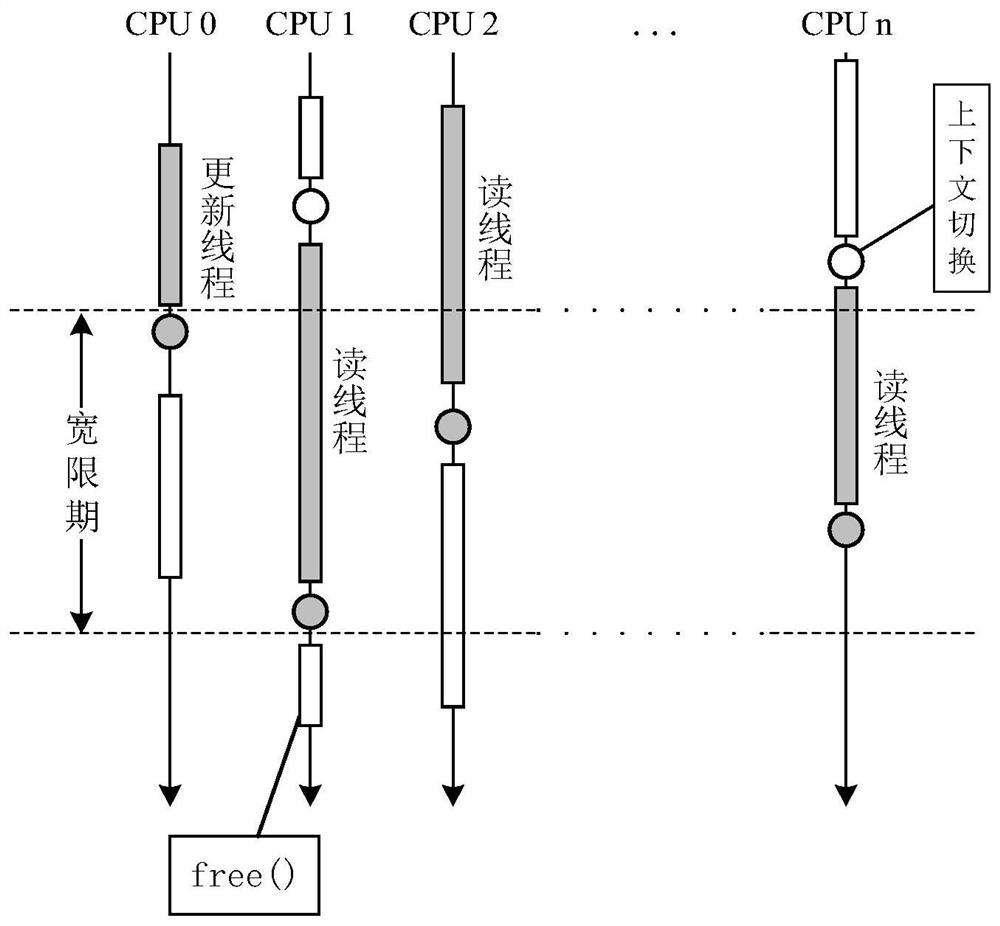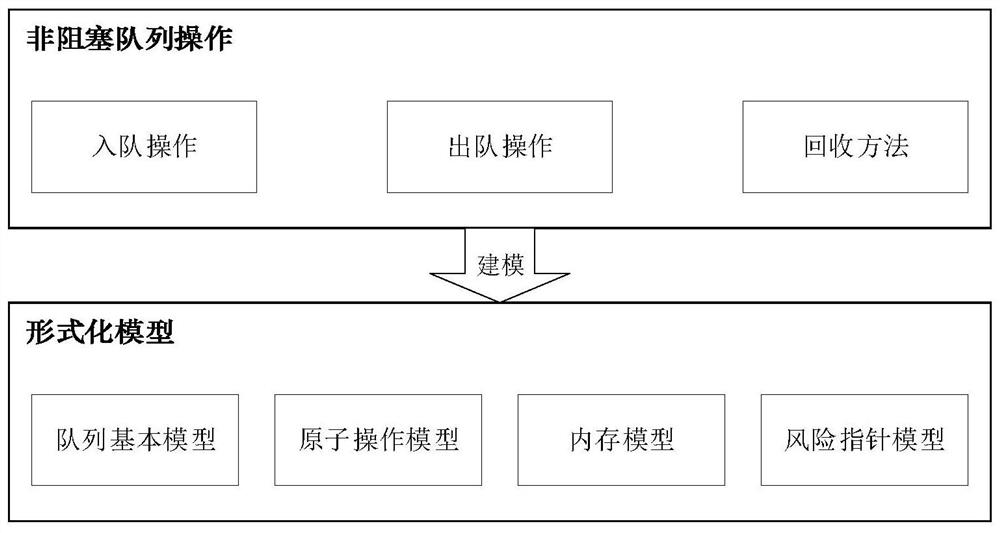Formal verification method of non-blocking algorithm based on memory recovery scheme
A formal verification and memory recycling technology, applied in computing, computer-aided design, instrumentation, etc., to solve problems such as difficulty in providing test cases
- Summary
- Abstract
- Description
- Claims
- Application Information
AI Technical Summary
Problems solved by technology
Method used
Image
Examples
Embodiment
[0089] like figure 1 Shown is a schematic overall flow diagram of the formal verification method of the non-blocking algorithm based on the memory recycling scheme of the present invention, and the present invention includes the following steps:
[0090] Step A: According to the core idea of the risk pointer scheme and the RCU synchronization mechanism, the overall design of the formal model is carried out for the non-blocking algorithm implemented by the application. The risk pointer scheme is designed based on non-blocking queues; the overall design of the RCU synchronization mechanism is based on the classic RCU scheme with multiple CPU cores, and only the context switch of each CPU is used as a sign of grace period detection, such as figure 2 As shown, the timeline is from top to bottom, and there are update threads or read threads on each CPU, where the dark rectangle represents the thread related to the current grace period. Similarly, the circles represent a context...
PUM
 Login to View More
Login to View More Abstract
Description
Claims
Application Information
 Login to View More
Login to View More - R&D
- Intellectual Property
- Life Sciences
- Materials
- Tech Scout
- Unparalleled Data Quality
- Higher Quality Content
- 60% Fewer Hallucinations
Browse by: Latest US Patents, China's latest patents, Technical Efficacy Thesaurus, Application Domain, Technology Topic, Popular Technical Reports.
© 2025 PatSnap. All rights reserved.Legal|Privacy policy|Modern Slavery Act Transparency Statement|Sitemap|About US| Contact US: help@patsnap.com



